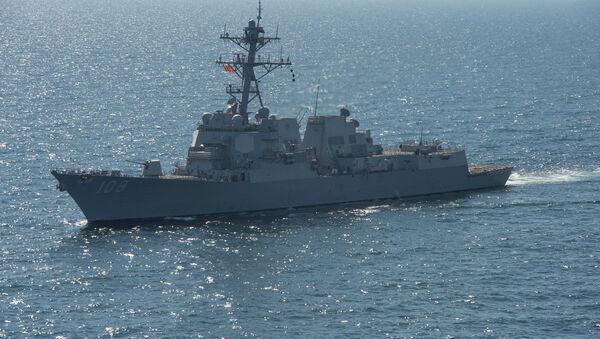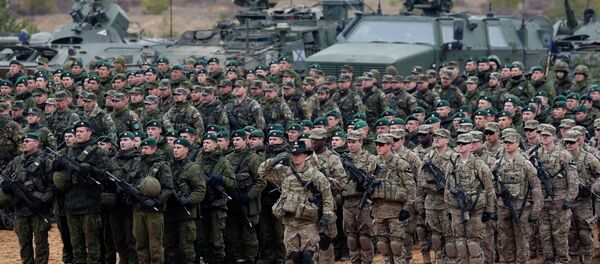On July 12, the Arleigh Burke-class destroyer took part in what the US Navy refers to as a passing exercise, or PASSEX, along with Latvian Navy patrol craft Jelgava.
Jūras spēku flotiles kuģis P-09 Latvijas ūdeņos sagaida ASV kuģi #USSJasonDunham, kurš ieradās ostas vizītē Rīgā. pic.twitter.com/RKjztY858X
— NBS (@Latvijas_armija) 13 июля 2015
Aimed at increasing interoperability, these drills usually include "tactical maneuvering exercises, passenger transfers, bridge-to-bridge communication drills and simulated threat defenses with aircraft," US Naval Forces Europe-Africa (NAVEUR-NAVAF) said on its website.
#US Arleigh Burke-class guided-missile destroyer USS Jason Dunham in #Riga #Latvia port visit July 12 #AlliedStrong pic.twitter.com/noCUCiWdoN
— Latvia to NATO (@LV_NATO) 13 июля 2015
Earlier in July, the US destroyer visited Helsinki, Finland and Tallinn, Estonia.
#USSjasonDunham #JasonDunham is in #Helsinki right now. Just wondering what is this visit all about. #russia #Crimea pic.twitter.com/z49a8ldltm
— rlc mac (@rlc_mac) 4 июля 2015
Tallinn-- #USSJasonDunham departed today after successful naval operations in Estonia #AlliedStrong pic.twitter.com/ekCPXFwG5g
— US Mission to NATO (@USNATO) 9 июля 2015
The destroyer's visit to Latvia reflects a worrying trend reinforced following the outbreak of the Ukrainian civil war. The United States and NATO used the Ukrainian crisis as a pretext to enhance their military presence and increase war-games in the Russian neighborhood.
The alliance describes its military buildup as "proportionate" and "defensive" activities, which pose no threat to any country, including Russia. Moscow remains unconvinced and has repeatedly voiced legitimate concern over the US and NATO's saber-rattling, warning it could undermine European stability and security.


